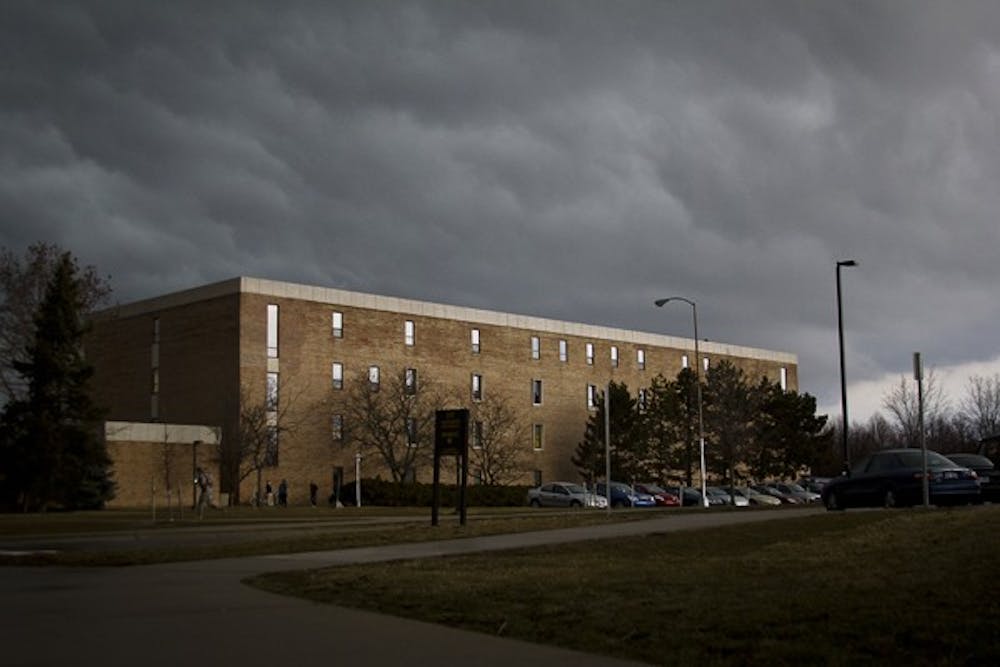CMU police chief says error caused multiple alerts during tornado warning; SAC, residence halls enact emergency plans
Severe weather circumstances, such as tornado watches and warnings, bring up the issue of safety for Central Michigan University students and faculty.
And while CMU had no issue notifying the campus community of the severe weather Monday, its Central Alerts emergency notification system caused overly frequent alerts for those signed up for the service.
A first alert was sent at about 6:15 p.m., as a tornado warning was announced. However, because of user errors, CMU Police Chief Bill Yeagley said several extra alerts were sent to those on the system. He apologized about the extra alerts and said CMU Police officials were addressing the matter.
CMU Police uses two different weather services, the National Weather Service and another service called MxVision WeatherSentry. While the NWS did not call for another tornado warning, WeatherSentry did and Yeagley said the call was made to send another alert through campus at about 7:05 p.m.
"It was in the interest of safety," he said.
The final text message was sent to users at about 7:45 p.m., an hour after the tornado warning sent out by the NWS expired, saying the warning was canceled. Despite heavy rain and hail, no damage or tornados were reported on campus.
Residence halls, SAC activate emergency plan
Residence hall directors, as well as resident assistants and multicultural advisers, go through extensive training to prepare for weather emergencies. When they begin their training, members of the residence hall board are given heath and safety guidelines, providing them with information on what to do in emergency situations.
"We recommended everyone stay in their rooms and away from windows, but the majority of students disregarded our warnings," said Grand Rapids sophomore Ryan Rooney, an RA in Kulhavi Hall.
Southfield senior Dominique Fields, also a Kulhavi RA, said he thought the situation was handled well.
"No disaster situation is ever handled perfectly, but as long as nobody gets hurt, it was successful," Fields said.
In Barnes Hall, Whitehall freshman Rebecca Browand said about 75 to 100 people packed into the basement for a half hour on two separate occasions on the recommendation of the hall staff and alerts received by the CMU alert system.
"We got word there was a tornado warning, so we went downstairs. Then it was done, but there was another one 15 minutes later," she said.
Browand said about 15 to 20 students who could not fit into the basement sought shelter in the community bathrooms on the first floor.
She said people took movies and music to enjoy while downstairs.
"I think we all made the most of the experience," she said.
Jason Bentley, First Year Experience director, has been well informed on what to do within residence halls in order to enforce the safety of CMU students.
“Each residence hall room has an emergency plan for fires and tornadoes posted on the back of the dorm room doors,” Bentley said. “This plan includes the safest places and exits to resort to.”
Other facilities on campus, such as the Student Activity Center, also have strict protocol they must follow when natural disasters strike.
“When a tornado is issued we immediately announce a warning over the SAC PA system,” said Stan Shingles, associate vice president of University Recreation, Events and Conferences. “There are people there who know what to do in the case of a tornado, and who will usher students to lower levels of the facility and away from windows or glass.”
Shingles said the SAC cannot require people to stay within the facility and doors must be kept unlocked during a tornado warning so that all students can seek cover and immediate safety on campus.
Tornado report turns out to be a fake
A little fun spun into a misunderstanding when 263 shares came from Mount Pleasant resident Jeanette Evitts’ photo on her Facebook page she captured of an alleged tornado funnel cloud behind her apartment complex.
In the midst of severe storm warnings, Evitts decided to photoshop a tornado in the picture that wasn’t really there. The convincing picture had people asking where the tornado was spotted. After going along with it, she came out and said that the tornado in the picture wasn’t real.
She stated in a comment on her Facebook "it made it to the news," referring to TV news outlet that shared the photo on its Facebook page.
She later apologized on her Facebook wall saying, “I AM SO SORRY EVERYONE. I photoshopped that photo of the tornado. I didn’t really think it would be so big! I’m so sorry! It got way out of control way too fast!”
WNEM-TV reported an EF1 tornado touched down in Midland County.
- Staff Reporters Kelsey De Haan and Melissa Beauchamp contributed to this story.




